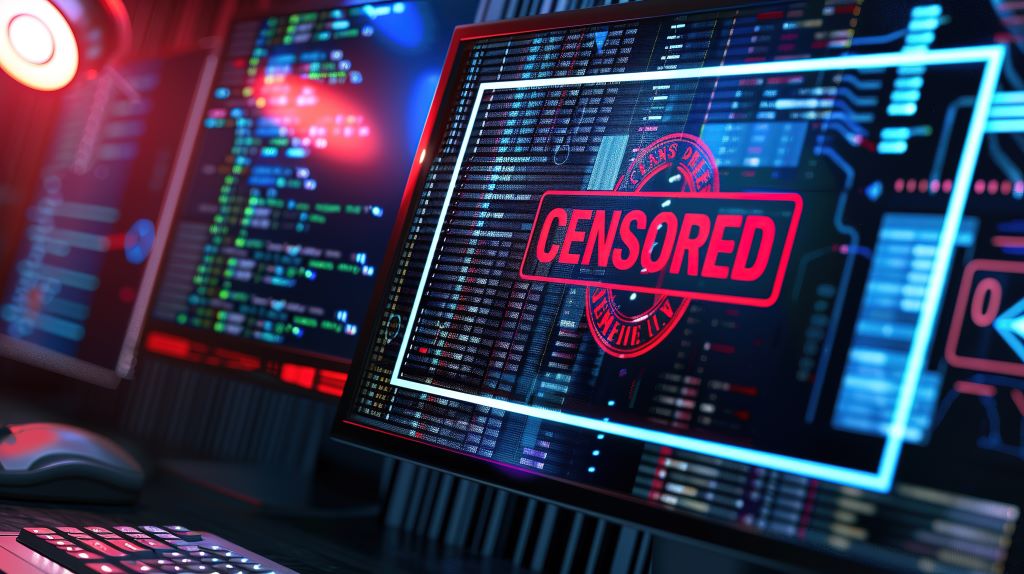Technology shapes our world, defining how we communicate, work, and think. Yet, this immense power can be both a tool for progress and a means of control. The Stanford Internet Observatory (SIO) exemplifies this duality, revealing how technology can be used for censorship and empowerment.
The Stanford Internet Observatory: The Internet’s Overzealous Hall Monitor
At first glance, the Stanford Internet Observatory (SIO) is an institution dedicated to ensuring online safety. With its annual “Trust & Safety Research” conference and historical focus on combating online child abuse, the SIO presents an image of altruism and security.
However, beneath this benevolent facade lies a more troubling reality. Due to its deep connections with Silicon Valley, the SIO became a central player in the largest censorship operation the U.S. has ever seen. Established in 2019, just before the 2020 elections, the SIO worked closely with government agencies and social media companies to police online content, often suppressing information contradicting the prevailing political narrative.
Through projects like the Election Integrity Partnership and the Virality Project, the SIO monitored and flagged content on Twitter, Google, YouTube, Facebook, and more platforms. This censorship, often presented as “recommendations,” effectively became marching orders for content moderators, stifling freedom of speech and manipulating public discourse.
The release of the Twitter files in late 2022 exposed the SIO’s role in this systematic censorship. Emails revealed that the SIO explicitly directed the removal of factually accurate information that did not align with specific political agendas. This revelation highlighted how technology was used not to protect but to control the narrative, violating the First Amendment rights of countless Americans.
How did they do it? The answer is simple: technology. The SIO used project management software called Jira from Atlassian (TEAM), a $45 billion tech company based in Australia.
This sophisticated technology allowed the SIO to integrate seamlessly with the internet and social media companies, flagging undesirable content and individuals based on their opinions. Such technology facilitated a level of control and censorship that was unprecedented in scale and efficiency.
This software was integrated with the internet and social media companies to flag undesirable content and undesirable people, based on their opinions.
Here’s a snapshot of what the system looked like:
Despite these revelations, a recent Supreme Court decision in Murthy v. Missouri failed to address these abuses, citing a lack of standing to hear the case. This ruling has left a dangerous precedent, allowing other entities to continue similar practices without fear of repercussions.
A New Dawn: Harnessing Technology for Good
While the story of the SIO paints a grim picture, it also serves as a powerful reminder of the potential misuse of technology. However, it is crucial to remember that technology is not inherently good or bad; its impact depends on how we choose it.
The future of technology, particularly artificial intelligence (AI), holds immense promise. Organizations like The Center for AI Safety aim to harness AI’s potential to benefit society. Though their names may sound innocuous, their mission to ensure AI development aligns with human values and ethics is vital. By focusing on safety and ethical guidelines, these organizations can help prevent the misuse of AI and promote its benefits.
Investors should take note of this optimistic outlook. AI and blockchain technologies are poised to revolutionize industries from healthcare to finance. For instance, AI can enhance medical diagnostics, making treatments more accurate and accessible. In finance, blockchain can ensure transparency and security, fostering trust in digital transactions.
Moreover, decentralized platforms powered by blockchain technology can democratize access to information, reducing the risk of censorship and allowing individuals to control their data. This shift towards decentralization is a powerful counterbalance to the centralized control exemplified by the SIO.
The dissolution of the SIO marks a turning point. It underscores the need for transparency and accountability in the use of technology. As we progress, it is essential to champion technologies that empower individuals and protect freedoms rather than those that seek to control and censor.
Embracing the Future: Technology as an Investment Opportunity
The key takeaway for investors is clear: the future of technology is bright and full of opportunities. AI and blockchain are at the forefront of this transformation, offering unprecedented potential for innovation and growth. By investing in these technologies, we can support the development of tools that enhance our lives and uphold our values.
The battle for freedom of speech and ethical technology use is far from over, but it is worth fighting. As we continue to advance, we must remain vigilant, ensuring that technology serves to empower rather than control. By doing so, we can create a future where technology benefits humanity, driving progress and prosperity for future generations.


